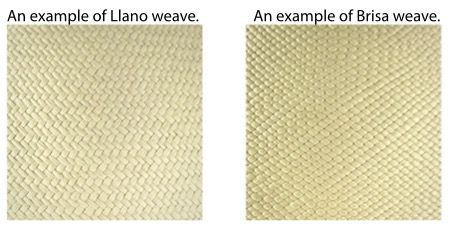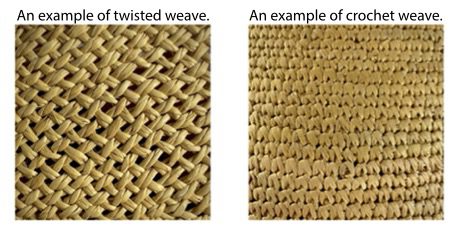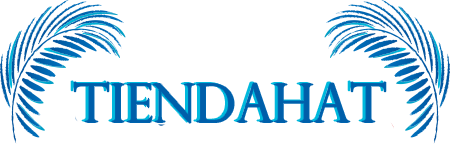PANAMA HAT WEAVES
When learning about Panama hats, one of the first topics for discussion is the variety of grades and weaves. Pachacuti’s skilled weavers are extraordinarily talented, hand-weaving a wide variety of patterns. They create hats of the finest quality, including ones with colourful designs and textures.
PANAMA HAT WEAVES
The Llano weave has a herringbone pattern and a more densely woven structure, which produces a more durable, smooth surface. Because of its more intricate design, hats produced using the Llano weave take longer to produce, are finer and as a result, more expensive. At Pachacuti, we use the Llano weave in our ‘Fine Weave’, ‘Aficionado’ and ‘Connoisseur’ hats.

OTHER WEAVES
For a Twisted weave, the weaver will twist the straw fibres in a twine-like fashion as they plait the hat base. This technique creates an open weave, producing a hat that is affordable, durable, flexible and well-ventilated – great for travelling!
A Crochet weave produces our most durable style of hat. In the same way that you use wool yarn to produce a bobble hat, weavers hand crochet entire strands of the toquilla straw. A Crochet weave hat is flexible, robust and easy to put back into shape. This makes it perfect for people with active lifestyles, such as gardeners, ramblers, backpackers and surfers.

The fineness and evenness of the weave as well as the quality and colour of the straw determine the quality of a Panama hat. In simple terms, the finer the weave, the finer the hat. Weavers achieve a finer weave by using thinner individual fibres separated from the strands of toquilla straw. Hats with a finer weave are more flexible, roll easily and are less prone to damage, but because they take much longer to produce, are more expensive. Reducing the width of the straw by half multiplies the amount of work by four. In other words, producing a hat twice as fine takes four times as long. For example, a Standard Brisa Fedora takes eight-nine hours to process the straw and weave. However, a Fine Brisa Rollable Fedora can take four-five days, depending on the skill and speed of the weaver.
The weave itself should be even and regular with no gaps or bumps. Ideally, every straw should fit together and be the same width whilst the rows should be straight and even. Some irregularity is unavoidable in handwoven hats, reflecting the personal style of an individual weaver. The weave density should decrease slightly from crown to brim, although adding extra fibres whilst weaving can mitigate this. Variations can also occur in straw thickness, length and colour.
